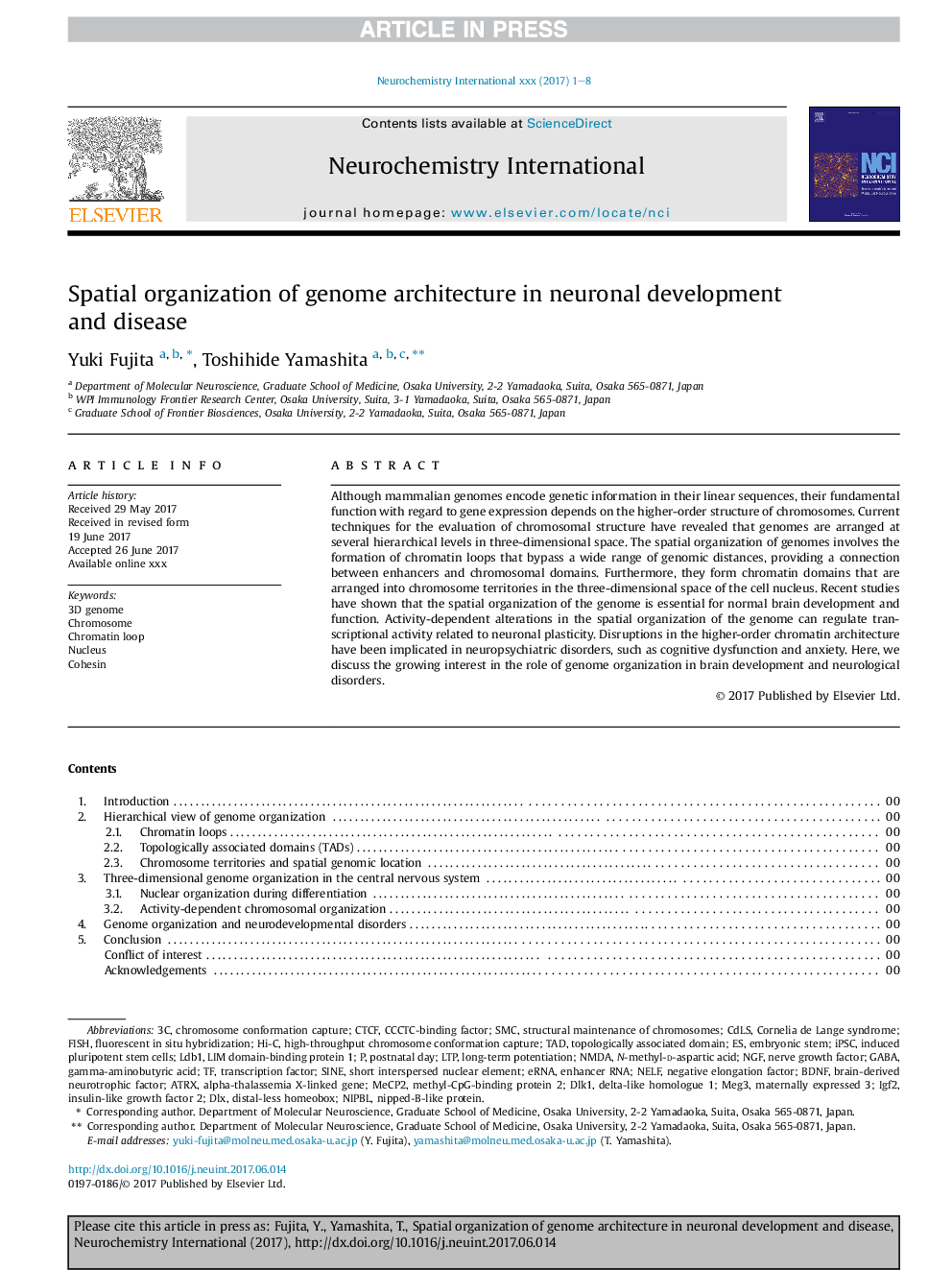| Article ID | Journal | Published Year | Pages | File Type |
|---|---|---|---|---|
| 8956347 | Neurochemistry International | 2018 | 8 Pages |
Abstract
Although mammalian genomes encode genetic information in their linear sequences, their fundamental function with regard to gene expression depends on the higher-order structure of chromosomes. Current techniques for the evaluation of chromosomal structure have revealed that genomes are arranged at several hierarchical levels in three-dimensional space. The spatial organization of genomes involves the formation of chromatin loops that bypass a wide range of genomic distances, providing a connection between enhancers and chromosomal domains. Furthermore, they form chromatin domains that are arranged into chromosome territories in the three-dimensional space of the cell nucleus. Recent studies have shown that the spatial organization of the genome is essential for normal brain development and function. Activity-dependent alterations in the spatial organization of the genome can regulate transcriptional activity related to neuronal plasticity. Disruptions in the higher-order chromatin architecture have been implicated in neuropsychiatric disorders, such as cognitive dysfunction and anxiety. Here, we discuss the growing interest in the role of genome organization in brain development and neurological disorders.
Keywords
MEG33D genomeLdb1CdLSNIPBLDlk1cohesinCTCFDLXIGF2ATRXN-methyl-d-aspartic acidNELFMecp2IPSCNMDANGFSMCBDNFenhancer RNASINEeRNAgamma-aminobutyric acidTADlong-term potentiationLTPchromatin looptopologically associated domainpostnatal dayembryonic stemHi-CInduced pluripotent stem cellsCornelia de Lange Syndromechromosome conformation capturenegative elongation factorCCCTC-binding factorTranscription factorshort interspersed nuclear elementnerve growth factorinsulin-like growth factor 2Brain-derived neurotrophic factorfluorescent in situ hybridizationFishstructural maintenance of chromosomesNucleusmethyl-CpG-binding protein 2ChromosomeGABA
Related Topics
Life Sciences
Biochemistry, Genetics and Molecular Biology
Cell Biology
Authors
Yuki Fujita, Toshihide Yamashita,
